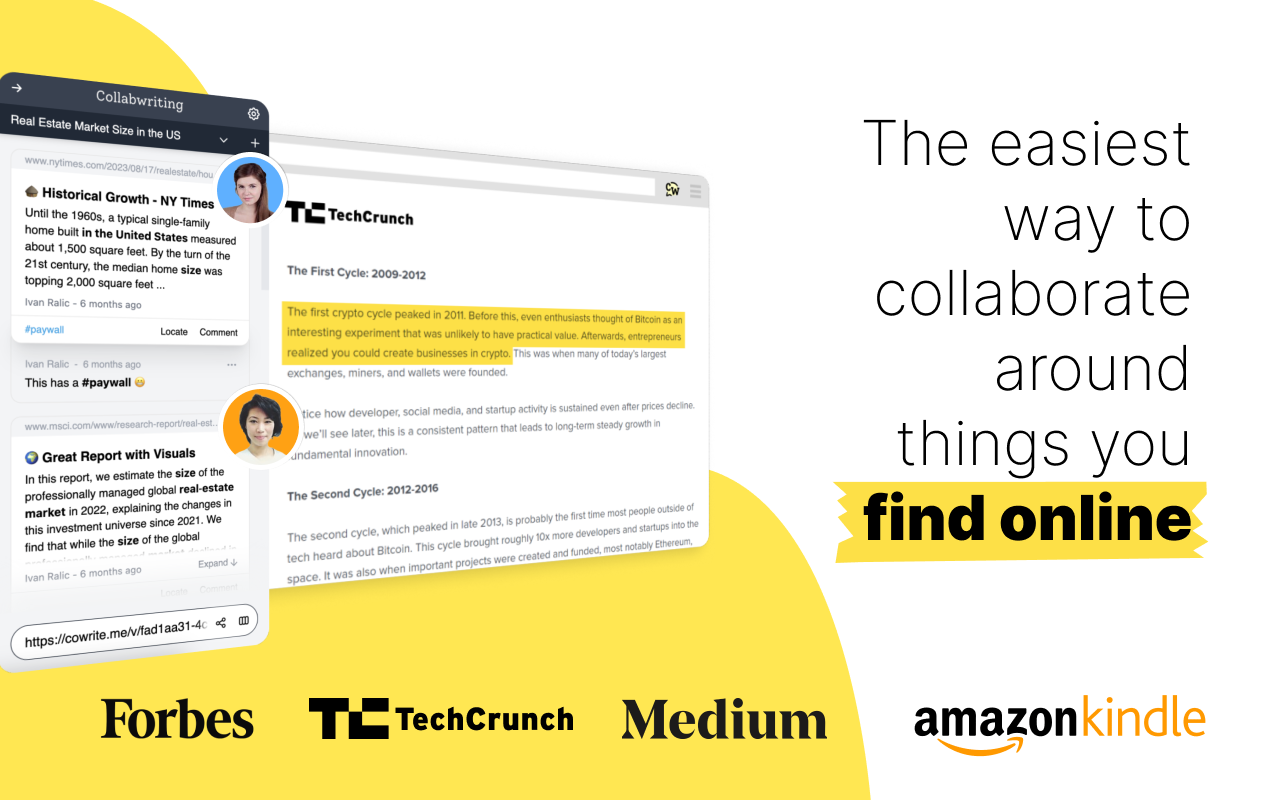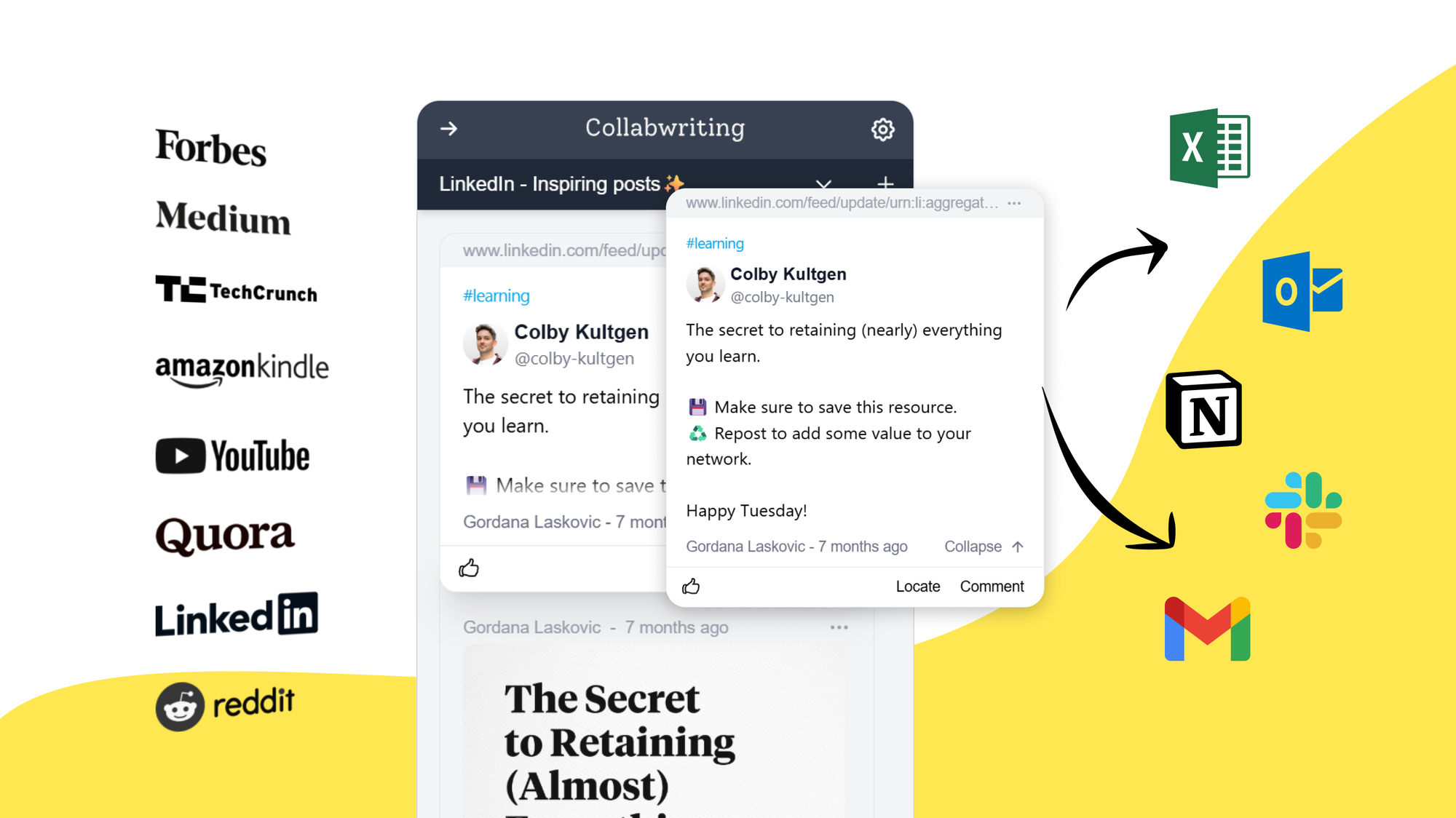If there's one thing that absolutely all of us do daily, then it's this - online research.
Regardless of the topic or purpose, the fact is that most of us depend on the information we find online to make many of our daily decisions.
- When we want to sell or create something - we research markets and competitors.
- When we want to learn or find out something new - we research different topics and relevant sources.
So, it's obvious that we conduct research for a variety of reasons and spend a lot of time online.
Keeping this in mind, it's pretty obvious that understanding how to conduct this research more thoroughly, accurately, and quickly can pay off sooner rather than later.
This is particularly important in a professional setting, where the insights gained from thorough research can significantly impact business decisions.
Sifting through a dozen links on your own is exhausting. When you’re collaborating with colleagues, it can become frustrating. And if you're trying to manage feedback from multiple sources while keeping everything organized for future reference, it can feel downright overwhelming.
The 6 steps to consider when researching
Like any other task, online research involves a few essential steps. Even if we don't do each one, remembering them can lead to getting accurate and helpful information.
Let's see what those steps are and why they're essential no matter what kind of online research you're doing.
1. Choose and define the topic that interests you
The first step should be to decide what you are looking for and why.
💡 What would you like to learn?
💡 Who will be involved with the data found through this research?
💡 What business goal is connected to this research?
For example, when it comes to market research, this could mean having an absolute understanding of your competitors in the space and their positioning. If you're researching a product, you might be trying to find the best value for money for your purchase.
The most important thing during the first step is to make a list of key research questions and individual things that interest you. Those questions should be as precise and clear as possible. Once you answer them, they should direct you to where to take your research next without ending up with unnecessary and potentially confusing information.
So, the main thing is to be clear about the questions you want to ask.
2. Decide what sources you need to explore
The second step should make your process easier by narrowing down the list of available research sources. For example - magazines, databases, and other company blogs.
You may not need all the available sources for your type of research, so it’s important to define your area of focus.
If, for example, you are engaged in medical research, then it is logical that you will focus on relevant medical journals and research papers rather than blogs. If you're doing a competitive analysis, checking out your competitors' websites and industry whitepapers will be the way to go.
3. Look at the previous relevant research and the conclusions that were drawn
The third step probably seems like the real point of research.
After the first two steps, now is the time to focus and dig into the various sources relevant to your search. However, take a few minutes to read the past threads and see how other people answered the questions asked as part of your research.
The most important part of this step is to organize your information so that it’s easily accessible and clear when you refer back to it throughout the research process.
Since it's easy to get lost in the sea of information, it's essential to store it in a way that's easy to reuse in the future and potentially share with your team.
4. Evaluate the relevance of your sources and the information you come across
With all the information available in the digital era, this step seems perhaps the most important. Regardless of the topic, it’s essential to evaluate sources by looking at their credibility and relevance.
- Who writes about this topic?
- Are they experts in a specific field?
- Why are they dedicated to that topic?
- Do they benefit from it?
This step allows you to identify any biases you or your sources may have. Treat these biases as research gaps and fill them with opposing perspectives and additional information.
5. Don't neglect to look into missing research information that’s important to conduct
It is common for many sources to have missing information. We can get plenty of data through secondary research, but it's not always exactly tailor-made for the questions you're looking to answer.
Sometimes it happens because the author is biased, and sometimes there are other reasons. Either way, when you come across gaps use them to your advantage and commit to primary research to fill those gaps with new information.
For example, if you want to research your customers, you can create a short survey to get feedback from them.
6. Organize information, sort all research, and draw conclusions
Once you've thoroughly gone through the previous five steps, it's time to finish your research by drawing conclusions based on everything you've researched.
This could mean having the answers to all the questions you had starting out or dismissing some initial hypothesis.
Either way, it should bring some value to your future decision-making process.

Collabwriting - Shareable Notes on Web Pages and PDFs
Collabwriting allows you to gather all your online sources in one place. Just highlight, save, and collaborate with anyone on any content you find online.
Conclusion
Do all these steps seem like a big time-consuming job?
They can be.
But they can also bring you closer to where you want to be or what you want to achieve. Better quality content, more informed decisions, or a better perspective of who your competition is.
The information is out there - you just have to find the best way to utilize it. 🚀






![Best Research Collaboration Tools in 2025: Zotero, Paperpile & Collabwriting [Compared]](/content/images/2025/07/image--7--1.png)







